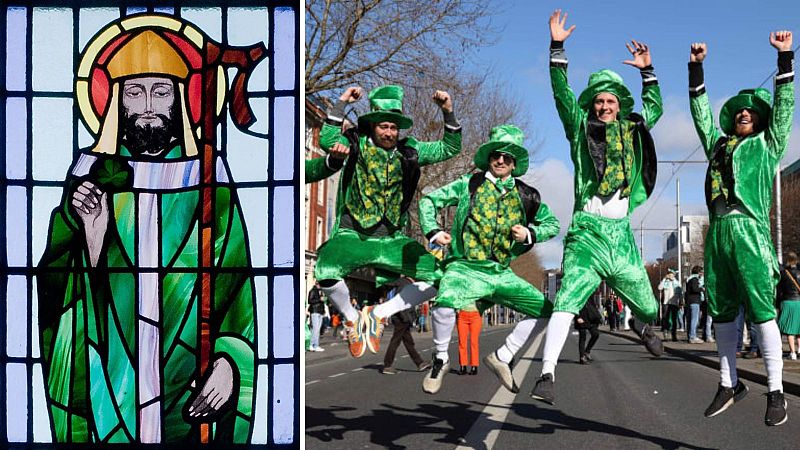
A Deep Dive into the History and Legends of St. Patrick’s Day
St. Patrick’s Day has been celebrated in Ireland for over a thousand years, observed every year on 17 March. Originally a religious holiday honoring the death of Saint Patrick, the patron saint of Ireland, it has evolved into a global celebration of Irish culture. Today, it is marked by parades, music, traditional foods, dances, and an abundance of green, the color most commonly associated with the saint.
Many symbols and legends linked to Ireland, such as leprechauns and shamrocks, have their roots in Saint Patrick's life. He is credited with introducing Christianity to a pagan Ireland. To help his followers understand the Christian faith, he used Celtic symbols like leprechauns—believed to be mischievous fairies—and the shamrock, a three-leaf clover, as a representation of the Holy Trinity.
A Global Celebration
Now, St. Patrick’s Day is observed in more than 200 countries around the world. It is recognized as a national holiday in the Republic of Ireland, Northern Ireland, the Canadian province of Newfoundland and Labrador, and the British overseas territory of Montserrat, which has a population with Irish heritage.
In the United States, one of the most iconic traditions involves dyeing the Chicago River green using 40 pounds of environmentally-friendly dye. This practice was reduced from the original 100 pounds to minimize ecological impact, and the river remains green for just a few hours instead of a full week.
Countries such as Canada, Australia, New Zealand, the United Kingdom, and Argentina also celebrate St. Patrick’s Day, particularly among their Irish diasporas.
Seven Lesser-Known Facts About St. Patrick
Despite his widespread fame, many people may not know the following facts about Saint Patrick:
1. Saint Patrick Was Not Irish
Contrary to popular belief, Saint Patrick was born in Britain, not Ireland, during the late 4th century. At the age of 16, he was kidnapped by Irish raiders and sold as a slave to tend sheep. After escaping, he returned to Britain and eventually became a priest. He spent 16 years studying Christianity across Europe before returning to Ireland to spread the faith.
2. His Original Color Was Blue, Not Green
Today, green is synonymous with St. Patrick and all things Irish, but the saint was originally depicted wearing blue robes. The shade of blue known as "St. Patrick’s blue" was once called "azure blue." Green gained popularity in the 18th century as the Irish independence movement adopted the shamrock as a symbol of unity and resistance. However, blue remains Ireland's official heraldic color.
3. His Real Name Was Maewyn Succat
Saint Patrick's original name was Maewyn Succat, and he was born to Christian parents in Roman Britain. His father was a deacon, and his grandfather was a priest. According to his own writings, he was not religious as a child. He later took the name Patricus after becoming a priest and eventually changed it to Patrick upon returning to Ireland.
4. The Legend of Driving Snakes Out of Ireland
One of the most famous stories about St. Patrick is that he banished all snakes from Ireland using a wooden staff while standing on Croagh Patrick, a hill now considered a pilgrimage site. However, scientists confirm that Ireland has never had native snake populations. The legend may symbolize the eradication of paganism and the triumph of Christianity in the country.
5. St. Patrick’s Day Was Originally a Religious Holiday
For much of its history, St. Patrick’s Day was a day of religious observance. In 1903, it was declared a day of religious observance in Ireland. Until the 1970s, pubs were closed on 17 March. In 1995, the Irish government launched a campaign to use the holiday as a way to promote tourism and showcase Irish culture globally. Today, it is widely celebrated with drinking, feasting, and parades, often involving costumes of leprechauns.
6. St. Patrick’s Day Parades Began in America
Although the holiday has been celebrated in Ireland for over a millennium, the famous parades that now define the festivities originated in the United States. The first definite parade took place in Boston in 1737, but the modern-day parades trace their roots to a 1762 celebration in New York. For Irish immigrants in America, the day became a source of pride and a way to connect with their heritage.
7. No One Knows Exactly Where St. Patrick Is Buried
The exact location of St. Patrick’s burial remains a mystery. Several sites claim to be his resting place, including Down Cathedral in Downpatrick, Northern Ireland, where other Irish saints are also buried. Some believe he may be interred in Glastonbury Abbey in England. Despite these claims, no definitive evidence has been found to confirm his final resting place.


Posting Komentar